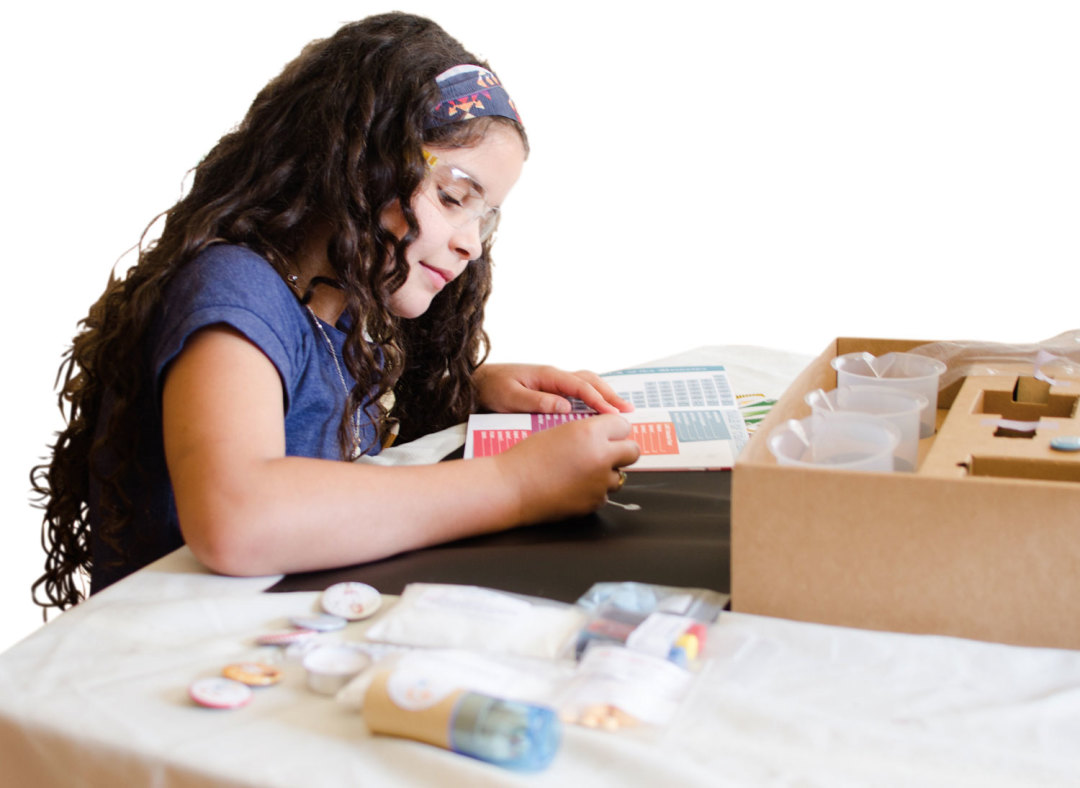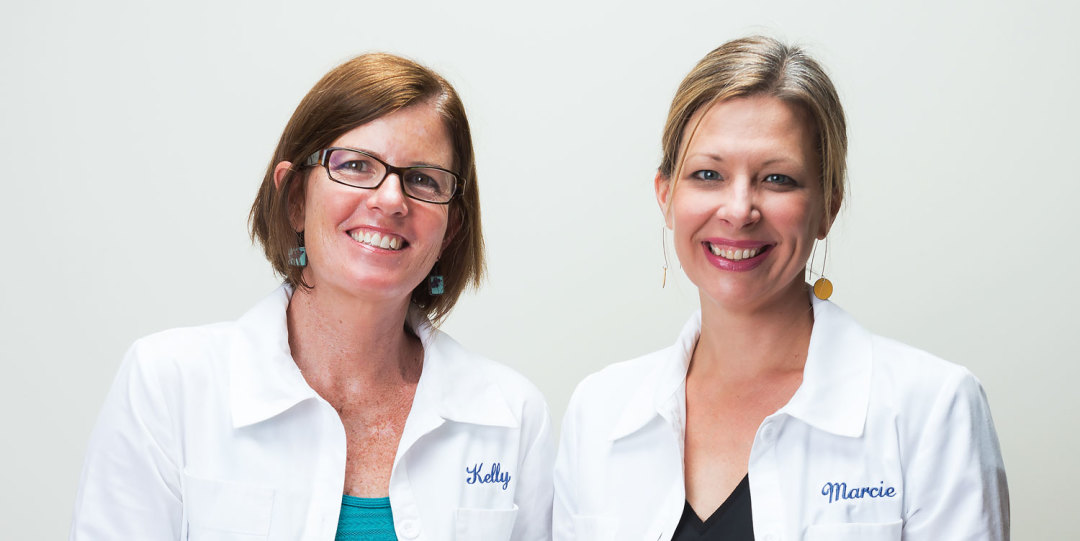How One Seriously Cool Kids Chemistry Set Is Getting Girls Into Science

Image: Kersten Green
Open your web browser, and run an image search for “science kits for girls.” You will invariably see a screen full of glaringly pink, sparkly boxes with names like “Beauty Spa Lab,” “Moisturizing Lab,” and “Perfume Science,” for girls to create their own makeup or bath salts.
“It’s shocking,” says Marcie Colledge, who has a PhD in neuroscience and two kids in elementary and middle school. “The only way a girl could be interested in science is through appearance?”
Adds Kelly McCollum, another Portland mother, with an epidemiology and biostatistics degree from Johns Hopkins: “They ask girls to rate, on a scale of 1 to 5, how relaxed they feel in the bath with the bath salts. That’s the science.”
Colledge and McCollum have a solution. In November 2014, the pair, who met bonding over a love of science as parents of kids at Alameda Elementary School, crowdfunded a serious chemistry set designed to introduce girls to the basics: molecules, molecular motions, chemical reactions, and the effect of temperature. They quickly reached their modest $25,000 goal, but high demand online and a coveted Gold Award from the Parents’ Choice Foundation turned their brainstorm into a full-time endeavor. Now their company, Yellow Scope, ships up to 260 kits a month out of its small Northeast Portland office, with plans for a physics set next year.
“We want to make kits, specifically for girls, that have rigorous science,” says McCollum. “They’ll come away with a real sense of ownership over these basic, key concepts.”
The broader vision is even more ambitious: help balance the massive gender disparity in the so-called STEM fields (science, technology, engineering, and math) by building confidence in girls before they’ve unlearned their excitement. In elementary school, research shows, girls show exactly as much enthusiasm for science as boys. But by eighth grade, those numbers drop off dramatically.
“They get bombarded with societal cues that science is for boys,” says Colledge. “There’s a famous social science test, called the ‘Draw-a-Scientist Test.’ All over the world, men and women, kids and adults, almost exclusively draw a white man with crazy hair doing science on his own. That’s just the pervasive stereotype.”

Yellow Scope founders Kelly McCollum (left) and Marcie Colledge
Image: Michael Schmitt




